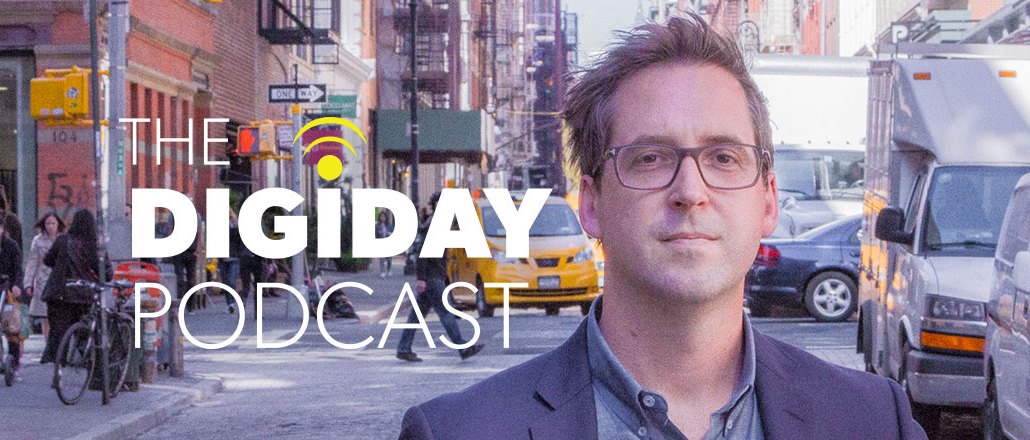Save 50% on a 3-month Digiday+ membership. Ends Dec 5.

When Mashable brought on former New York Times executive editor Jim Roberts in October 2013, the upstart digital media company took an ambitious leap into the crowded field of general news. That meant devoting resources to covering the conflict in Ukraine — and competing with the likes of the New York Times and CNN.
Now, two and a half years later, the company is trimming its sails. A week ago Mashable announced it would lay off 30 people and narrow its focus to core areas like tech and entertainment through digital lens. It replaced Roberts with Greg Gittrich as chief content officer. The Daily News, NBC News and Vocativ alum said his focus is establishing Mashable’s clear identity on “where culture and technology meet.”
“It’s important to have a clear identity, and to know where your areas of strength and expertise are,” Gittrich said on this week’s Digiday Podcast. “General news is tough because you’re chasing the sun. You’re competing not only with NBC News, BBC, AP and Reuters, but with anybody with a phone who is at the scene.”
Below are highlights from the half-hour conversation, lightly edited and condensed for clarity.
Seeking scale, many in digital media lost their way.
With news of Mashable’s cuts and BuzzFeed missing its revenue forecasts, the pendulum has swung in the media industry from those amassing large audience numbers. At the root of the race for giant audiences: big rounds of funding that gave publishers like Mashable no choice but to find ways to get big fast, particularly with declining ad rates.
Ad position: web_incontent_pos1
“Looking for audience and looking for ways to scale, no doubt,” Gittrich said of publishers stretching their editorial mandates. “The last five years, the amount of stories has increased. It was already large, but the amount of stories being created has increased. It was already large. The amount of coverage now competing for attention is much larger, which makes it important to focus and to have that identity and voice.”
Mashable’s focus: culture meets tech.
Now that publishers are waking up to the idea they can’t be all things to all people, the question is what they’ll stand for exactly. Mashable began as a blog devoted to social media. After its foray into general news, Gittrich sees a return to its roots, in a sense. The mandate now is to look at everything through the lens of how tech is altering culture and society.
“Our audience is young. It’s impossible for them to separate their digital life and their real life. They’re making technology work for them. They’re not worried about the latest thing to come out. They’re interested in how to game it, whether it’s good or not. The way we think of the voice of the coverage is we want to be informed, we want to be entertaining where appropriate, and then we want to be optimistic. The key is that voice needs to be consistent. That’s the challenge ahead.”
Mashable, like all publishers, needs diverse revenue streams.
Underpinning a lot of the angst in the media world is the commoditization of advertising, particularly display ads. Publishers that over-indexed in advertising in their revenue portfolio need to diversify. For Mashable, that means complementing standardized ads with more branded content and to continue licensing its viral-monitoring tech.
“We, and our competitors no doubt, are looking for several ways to bring in money,” Gittrich said. “I’m the guy who focuses on the audience. It starts with them. We have to be very realistic and stay on top of the audience patterns.”
Ad position: web_incontent_pos2
Video is an audience-driven phenomenon.
Mashable, like BuzzFeed and other publishers, is emphasizing video. CEO Pete Cashmore said video would be a major focus going forward. Gittrich said he expects half the content Mashable creates to be video in many forms, whether a Snapchat story or a documentary. But many see this as a Hail Mary play: video still gets high ad rates, and platforms like Facebook want it, so publishers are responding. Gittrich insisted this is an audience-driven phenomenon.
“I don’t think you can separate the two,” Gittrich said of whether the video craze is based on audience or business demands. “Without questions, video is easier to make and distribute and more enjoyable to watch on your phone and also on Apple TV and other devices. Five years ago, the best way to watch video was pull up a website and sit through a pre-roll to watch a video.”
More in Media

What publishers are wishing for this holiday season: End AI scraping and determine AI-powered audience value
Publishers want a fair, structured, regulated AI environment and they also want to define what the next decade of audience metrics looks like.

Digiday+ Research Subscription Index 2025: Subscription strategies from Bloomberg, The New York Times, Vox and others
Digiday’s third annual Subscription Index examines and measures publishers’ subscription strategies to identify common approaches and key tactics among Bloomberg, The New York Times, Vox and others.

From lawsuits to lobbying: How publishers are fighting AI
We may be closing out 2025, but publishers aren’t retreating from the battle of AI search — some are escalating it, and they expect the fight to stretch deep into 2026.
Ad position: web_bfu
